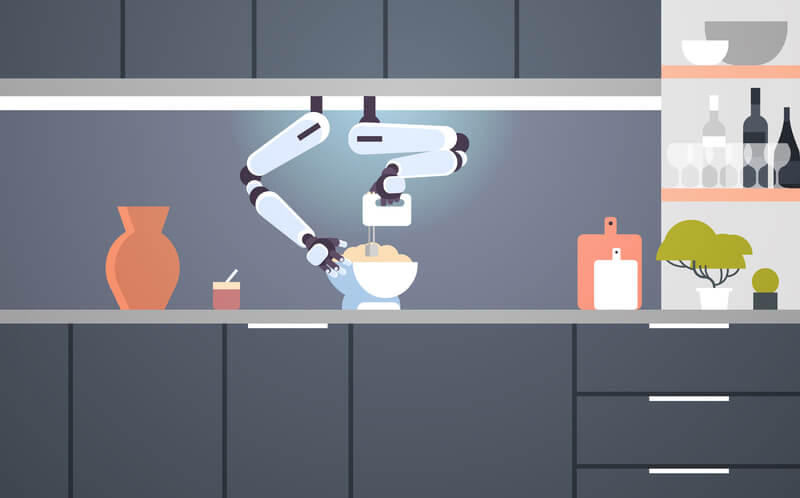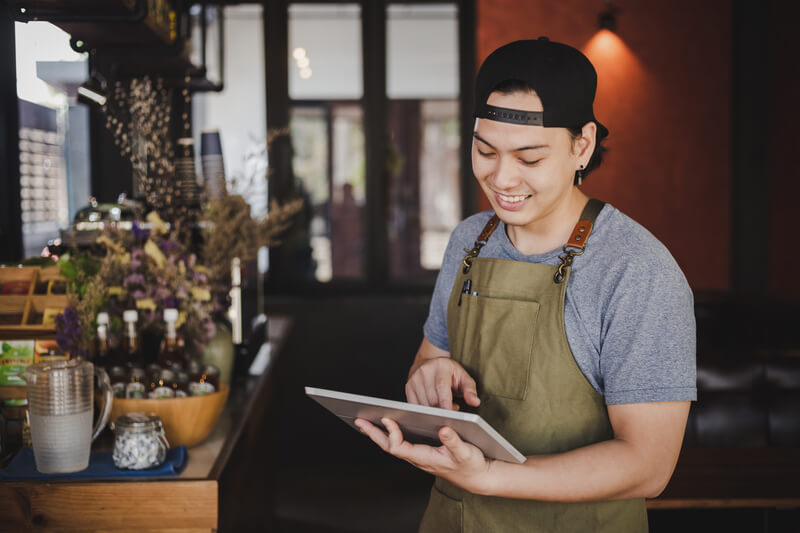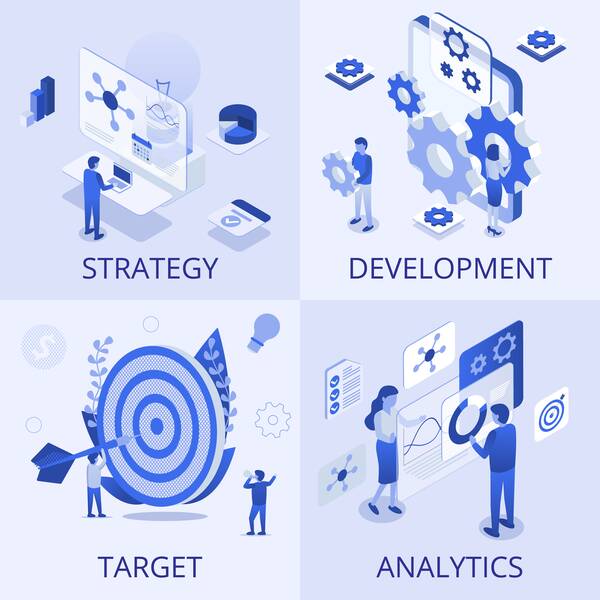Automation & Technology in the Restaurant Industry
By Jonathan Weins

A smarter kitchen … Smart equipment equipped with sensors will ease a chef’s burden
We are living in unprecedented times. Technology is progressing at an accelerated pace and impacting every industry. After many decades of limited innovation in the restaurant industry, there are big technology trends looming on the horizon. The impact of those technologies has the potential to lead to bigger changes over the next 25 years than in the past 1,000 years of the restaurant industry’s long history.
An Industry With Slow Technology Adoption
Fundamentally, restaurants fulfil a dual purpose: to serve the necessity of food for customers, and more importantly, to act as a place for social gatherings and entertainment. It is hard to pinpoint exactly when the first restaurants were started but both the ancient Romans and Chinese dynasties had restaurant-like establishments.
Since those historic times, little has changed in the way restaurants operate. It is a manual labour-heavy industry that completely relies on people cooking food in the kitchen and on people taking orders from customers. In its essence, a restaurant today closely resembles a restaurant 200 years ago.
Most significant changes in the industry typically centre tweaking of the business models, locations and concepts. One of the biggest recent innovations was probably the invention of the QSR business model in the second half of the 20th century. Speed and convenience of service were the main benefits and with it, came new innovations such as assembly line cooking and drive-throughs.
The last 20 years have been very sluggish in innovation however if we compare eating at a restaurant to other areas of our life. The internet and the smartphone have fundamentally changed the way most of us spend our time at home and work. While customers constantly use their phones in a restaurant to text or to share pictures, the restaurant itself is completely disconnected from the customer’s phones. Until recently, however, there was also little reason for faster technology adoption as most innovations did not have a significant impact on the customer experience or economics. This is about to change dramatically over the next decades.
Big Technology Trends on the Horizon
Several big technology trends that are lurking on the horizon though have the potential to completely change the customer experience and the restaurant economics. Those trends are already happening today but hard to recognise. It is typical for big technology shifts as the issue is that technology is progressing exponentially. As humans, however, we live in a mostly linear world so our thinking and perception is used to linear change. Yesterday’s progress might be barely noticeable today, but it might change everything tomorrow.
The big tech trends are not some hidden secret trends but instead, they are features of the big technology trends of our current time which will impact most industries: Robotics & AI; explosion of collection and usage of data through connectedness and IoT; 3D printing and even advancements in genetics.

Cloud software, service applications and a fully paperless environment will ensure faster, more efficient food preparation
Automating the Kitchen
When thinking about technology in restaurants, robot-waiters like Softbank’s Pepper or Burger flipping robot arms like Flippy come to mind. Robotics, AI and IoT are rapidly advancing fields; however, the use of robotics in restaurants will look different from what most of us marvel at in the entertaining videos that go viral online.
Keeping the initial CAPEX cost as low as possible has high priority for restaurants, especially for franchised chains that need to ensure fast paybacks for franchisees. A typical robot arm like Flippy still costs tens if not hundreds of thousands of US dollars today. This CAPEX is prohibitive and doesn’t make economic sense given the limited cost saving of replacing human tasks. On top of that, maintenance costs make the calculation even worse. Unlike computing power and software, costs for robots have only been slowly coming down.
Instead of human-looking robots, the impact of robotics, AI and IoT will occur very differently in the industry. Increasing computational power combined with decreasing computing costs is leading to an intelligence explosion in which intelligence will be added to almost everything. Making previously “dumb” kitchen equipment smart will allow a new level of automation.
Today, many upscale restaurants are using smart combination ovens that can execute multiple functions such as baking, roasting and steaming and can run simple programmed sequences of that. In this way, the combination oven has already replaced lots of cooking steps of chefs. More and more “dumb” kitchen equipment is now receiving intelligence. Woks are getting upgraded with sensors to automate and control the cooking sequences and simple vegetable cutters use image recognition to cut vegetables into any possible shape.
Making existing equipment smarter will be further accelerated by software by connecting different kitchen equipment under a kitchen operating system. So far, a lot of paper is already getting replaced in many restaurants by cloud software as a service application. Currently those applications still only handle isolated tasks like POS, bookkeeping or inventory management. In the next couple of years, more applications are getting fully integrated and through the use of AI, planning workflows, inventory management and revenue management will get significantly automated and optimised. Not just kitchen equipment that is getting smarter, the entire restaurant operation is upgraded with artificial intelligence.

Not much has changed in the restaurant scene in the past 1,000 years of restaurant history
Faster, Easier & Exactly How You Want It
A lot of the previously mentioned, innovation will change the Back of House (BOH) and be only indirectly noticeable to customers. However, the impact on customer experience will be profound.
Faster and more efficient cooking and order processing will significantly affect service speed and all of a restaurant’s biggest variable costs. With that, customers will get their food faster and receive more value for their money. In low budget restaurants, the front house staff will completely be replaced by self-ordering kiosks or apps. Orders will be taken through screens or even voice command through voice-recognition. Payments will be instant and cashless through technologies such as face-recognition payments or proximity sensors.
In the BOH, most of the kitchen will be automated and completely streamlined. As a result, food will get more affordable and customers get more value for their money while at the same time, customers get served faster. But value does not just mean lower prices or bigger portions as technology completely redefines the customer experience and relationship with a restaurant.
A true revolution for the industry will come through connectedness and the use of data. This revolution allows restaurants to go back to the roots of the hospitality industry. The roots in which the chef and kitchen staff know his regulars by name and know exactly what they like to eat and how it should be prepared.
Data is the new oil of the 21st century. We are living in a connected world in which online to offline will get more and more integrated in the most seamless way imaginable. Data combined with artificial intelligence will allow any retail business to get to know its customers intimately and to build a direct relationship with them. There are many implications from a direct relationship: customisation of the dining experience, highly relevant marketing and rapid menu innovation are just some of them.
Tech-enabled QSR concepts such as Southeast Asia’s Pop Meals already use technology to build a direct relationship with its customers. Pop Meals receives every day thousands of customer feedback data through the Pop Meals app. Customers rate their orders, share detailed feedback about each meal and suggest new meals for the menu. In the kitchen, the in-house R&D chef team is using algorithms to make those data points actionable for the ongoing R&D process. The result is a crowdsourced menu, data-driven quality monitoring and continuous innovation of the menu. It is the first time in the industry that this kind of data has become available and actionable.

Data-driven environment … The F&B industry will rely on data and artificial intelligence to revolutionise the industry in the next 25 years
In the functional food space, customisation is even benefitting from progress in the fields of genetics and molecular biology. Nowadays, a personal DNA test already costs less than a hundred dollars and costs are quickly reducing. In the future, advancement in genetics will allow all of us to understand our DNA better, we will know how to avoid allergies, numerous diseases and even understand genetically driven food preferences.
This may sound far-fetched; however, concepts such as the upcoming Singularity Sushi restaurant in Tokyo are already trying such a concept in 2021. Singularity Sushi is planning to collect biosamples from prospective customers prior to the visit and it is then using 3D printing to “cook” customised food for each individual customer. For many of us, the price point for those niche food applications are prohibitive and it might even sound too weird to try. But what is clear is that the next 25 years in the restaurant industry will be extremely exciting and nothing like what we have seen in the past.

Jonathan Weins is the CEO & Co-founder at Pop Meals (previously dahmakan).




